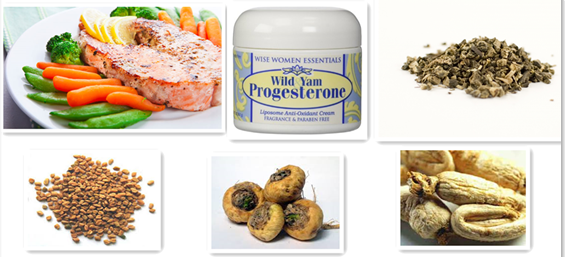Having your tubes tied is a method of birth control when you feel you are done having children. The fallopian tubes are cut and tied to make sure that the egg and sperm do not meet and embed in the uterine lining. Post tubal ligation syndrome is a condition that occurs after having your tubes tied. This article explains more about the syndrome, the symptoms, and how to manage it.
What Causes Post Tubal Ligation Syndrome?
It is still unknown what exactly causes post tubal ligation syndrome, but believed to be possible damage to the ovaries during surgery. Any damage to the blood supply reduces blood flow to the ovaries and a decrease in estrogen and progesterone. This is similar to what happens during a total hysterectomy. Even though the uterus and ovaries are still fully functional, hormonal imbalances can still occur. It is most likely damage to the “receptor cells” in the tubes that trigger the release of the hormones.
Proponents of the syndrome state that it may possibly be “doctor caused” due to improper surgical techniques. This article neither agrees nor disagrees but only serves to inform readers of the condition and symptoms, no matter what the cause is.
What Are The Symptoms of Post Tubal Ligation Syndrome?
There are a number of different symptoms that may point to post tubal ligation syndrome. These include:
- Anxiety
- Muscle pain
- Cramps worse after tubal ligation
- Joint pain
- Loss of libido
- Irregular periods – This symptom is the most common if your tubal ligation was before age 30. This may be due to lower levels of estrogen and progesterone and reduced blood supply.
- Long heavy periods after tubal ligation
- Hot flashes
- Night sweats
- Insomnia
- Facial hair growth
- Thinning hair on head
- Body hair decrease
- Fatigue
- Memory loss
- Nausea
- Flatulence
- Gas pressure
- Mood swings
- Pelvic pain
- Vaginal dryness
- Headaches
- Dizziness
- Weight gain
- Breast tenderness
- Tubal pregnancy
- Incontinence
Some of the symptoms are caused by disruption to blood flow to the ovaries. Emotional symptoms may be caused partly from regret over the procedure and partly from hormonal imbalances. Sexual symptoms may be caused by changes in the vaginal pH balance. Incontinence may be caused by surgery to the pelvic area.
How to Deal with Post Tubal Ligation Syndrome
Many doctors will shrug off post tubal ligation syndrome because it does not yet exist in any medical textbook. If you go back to the doctor that did the surgery, they may not want to or be able to help. The good news is there are doctors that will help you medically. Some of the medical treatments that have been found to help are:
1. Sterilization Reversal
Some doctors will try reversing the tubal ligation. If the blood supply was damaged in the first procedure, this may not work. There are women who report reversing the surgery does make them feel a lot better.
2. Uterine Ablation
If you have a large amount of irregular and heavy bleeding, the doctor may suggest uterine ablation. There is a new quick procedure called, NovaSure that has been remarkably successful for bleeding. The women who have the procedure done report that their heavy periods have lightened or even stopped altogether. There may be additional side-effects with having ablation, so consider this option carefully.
3. Hysterectomy
If there are severe issues, some doctors may recommend a hysterectomy. This sort of procedure places the body back at “square one” hormonally and the doctor can then balance the hormones with medications. In some women, the problem is worse after hysterectomy. This procedure is permanent and cannot be reversed.
4. Hormone Replacement
The doctor can recommend birth control pills or other hormone replacement to help with any hormone imbalances. These can be given in the form of oral pills, patches, injections, or creams. There are risks and side-effects so women who are breastfeeding or who smoke need to consider other options.
There are some natural and alternative options to deal with post tubal ligation syndrome:

|
Remedies |
Description |
|
Healthy Diet |
Eat a diet high in fiber and try to stay at about 1,500 calories per day. Try to include plenty of fresh vegetables, fruits, and drink plenty of fluids. Eat foods that are high in Omega-3 fatty acids and take a multivitamin daily. Many women find their body balances much more easily with good nutrition and sometimes this is all it takes to recover. Avoid processed food additives and chemicals of any kind. This can throw off the delicate hormonal balance. |
|
Progesterone Cream (Mexican Wild Yam) |
Natural progesterone cream made from Mexican Wild Yam can help to balance hormones. It relieves symptoms including hot flashes, reduced sex drive, and vaginal dryness. It has a natural form of estrogen and progesterone that helps bring balance back to the body. It can also relax tense vaginal muscles and relieve pain during intercourse. |
|
Black Cohosh |
This herb is a natural anti-spasmodic and mild sedative. It has anti-inflammatory properties and can help reduce menstrual pain. Women report relief from hot flashes, vaginal pain, low sex drive, and menopause symptoms. |
|
Fenugreek |
The Egyptians have long used Fenugreek to help with reproductive issues. It can increase the milk supply in nursing mothers, increase sex drive, and improve blood flow to the reproductive organs. |
|
Maca |
This is actually a vegetable that is related to broccoli. Studies that were done at a major medical center showed this remedy can increase sex drive naturally. It can also help stimulate the follicles during the ovulation cycle in women. |
|
Dong Quai |
This Chinese herb is also known as, Ginseng. It can help regulate menstrual blood flow, relax the uterus and relieve pain. It can also calm heart palpitations and help sleep issues. |
